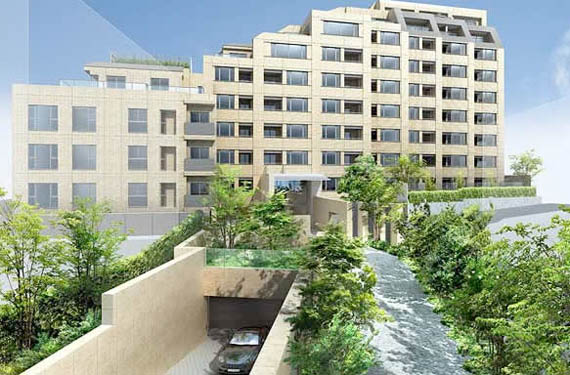High radiation levels from concrete in new apartment building

On January 15, the Cabinet Office's Nuclear Emergency Response Headquarters and the Nihonmatsu City Council in Fukushima Prefecture announced that radiation levels of 1.24 microsieverts/hour were detected in a brand new 3-storey apartment building in the city. The levels exceed the radiation levels found outdoors and residents from the 1st floor of the building have been advised to move elsewhere.Read more
Politician Ozawa's vast real estate holdings
 Politician and former Democratic Party Leader, Ichiro Ozawa, has been involved in a drawn-out trial over possible involvement in false reporting of political funds stemming from the 400 million Yen cash purchase of land in Fukazawa, Setagaya-ku, in 2004.
Politician and former Democratic Party Leader, Ichiro Ozawa, has been involved in a drawn-out trial over possible involvement in false reporting of political funds stemming from the 400 million Yen cash purchase of land in Fukazawa, Setagaya-ku, in 2004.
The indictment alleges that he conspired with three former aides in not listing the 400 million yen loan to Rikuzankai in its political funds report in 2004, and listing 350 million yen for the land purchase in a 2005 funds report, instead of for 2004. Also, the organization did not explain where the funds came from.Read more
Downward price movements intensify in Tokyo
Nomura Real Estate Urban Net has published the latest residential land and second-hand apartment price movements for greater Tokyo. The downward trend of property prices is beginning to intensify.
According to the data, the average price of residential land in the last quarter of 2011 fell 0.9% from the previous quarter. From the surveyed locations, only 3.6% of locations reported an increase in land prices, 59.3% reported no change in prices and 37.1% reported a fall in land prices. For second-hand apartments, the average price in greater Tokyo was down 1.1%.Read more
On Sale: Mid Garden Akasaka Hikawa

With the first round of sales starting on January 14, price guidelines have been announced for Mid Garden Akasaka Hikawa. Two and three bedroom apartments are priced between 58 and 150 million Yen and the average price per square meter is 1,166,000 Yen. This property is competitively priced so sales are expected to go well. For a comparison, apartments in the recently completed luxury tower, The Tokyo Roppongi Club Residence, just 500 meters away are priced at approximately 1,650,000 Yen/sqm.Read more
10,000 public housing complexes require earthquake-retrofitting
Of the 183,547 public housing complexes run by local governments and the Urban Renaissance Agency (UR) across Japan, as many as 10,111 buildings require earthquake-retrofitting work. The total number of individual apartments within these buildings is 396,361.Read more
Proposed law to reduce minimum voting rights for reconstruction
The number of aging apartment buildings in Japan that need to be rebuilt in the near future is growing at a rapid pace, yet actual reconstruction projects are seriously lagging.
These projects are frequently stalled as the body-corporate meetings can take up to 10 years before any agreement is reached. This is due in part to the laws which require over 80% of apartment owners to agree to reconstruction. Older buildings tend to have older residents who are happy to stay where they are and don't want to relocate to temporary accommodation for 3 years while awaiting their new home. Other setbacks include a lack of funds for the project and owners with low incomes who cannot afford to take on any additional financial burdens.Read more
Is Tokyo's special economic zone destined to be a flop
In recent years, Japan has been losing losing its competitive advantage as foreign companies choose to locate their headquarters in other more business and tax-friendly Asian cities such as Singapore and Hong Kong.
As a way to increase the nation's international competitiveness the Japanese government recently announced plans to create special international business zones in seven areas across Japan. Locating your business within one of these zones will qualify you for certain tax breaks.Read more
